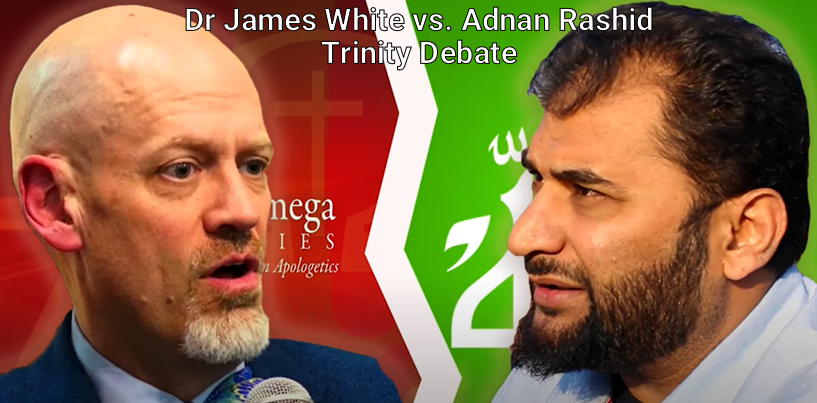Reflections on the Baptist Confession of Faith of 1689. 23 Aug 14 began a perhaps unbroken, orderly, and personal journey through my favorite written confession of faith. This will be my personal reflections on this beloved written codification of the Christian Faith which is according to a Baptist flavor.
NEXT-
Chapter 8, paragraph 2a: “The Son of God, the second person in the Holy Trinity, being very and eternal God, the brightness of the Father’s glory, of one substance and equal with him who made the world, who upholdeth and governeth all things he hath made, did, when the fullness of time was come, take upon him man’s nature, with all the essential properties and common infirmities thereof, yet without sin; being conceived by the Holy Spirit in the womb of the Virgin Mary, the Holy Spirit coming down upon her: and the power of the Most High overshadowing her.”
In the Christology of the Reformed Baptist church today, as in any legitimate denomination of Christianity, our theology about Jesus (our Christology) is robust. A true Christology is part of Trinitarian Theology. We have to make space in our Christology for Jesus as incarnate God-man. Truths about both his manhood and his Deity need always to be mutually affirmed. He is both one hundred percent God and one hundred percent man. The Council of Chalcedon in AD 451, a western council, summarized what’s called the “Hypostatic Union” wonderfully. The Athanasian Creed, which was developed in Latin slightly later, traces itself back to Athanasius who defended the Trinity at the Council of Nicea and died in AD 373. It confesses its understanding of the mystery of Trinitarian Christology in the following way:
We worship one God in trinity and the Trinity in unity, neither confusing the persons nor dividing the divine being. For the Father is one person, the Son is another, and the Spirit is still another. But the deity of the Father, Son, and Holy Spirit is one, equal in glory, coeternal in majesty. What the Father is, the Son is, and so is the Holy Spirit. Uncreated is the Father; uncreated is the Son; uncreated is the Spirit. The Father is infinite; the Son is infinite; the Holy Spirit is infinite. Eternal is the Father; eternal is the Son; eternal is the Spirit: And yet there are not three eternal beings, but one who is eternal; as there are not three uncreated and unlimited beings, but one who is uncreated and unlimited. Almighty is the Father; almighty is the Son; almighty is the Spirit: And yet there are not three almighty beings, but one who is almighty. Thus the Father is God; the Son is God; the Holy Spirit is God: And yet there are not three gods, but one God. Thus the Father is Lord; the Son is Lord; the Holy Spirit is Lord: And yet there are not three lords, but one Lord.
All of the points mentioned here are upheld in the LBCF. It was indeed denials of the personhood of Jesus that most plagued the very earliest generations of Christians. Questions about his Deity, at least overwhelmingly so, came later. Objections like Gnosticism (denying Jesus’ humanity) and Arianism (denying his full Deity) were among the very earliest challenges. Almost immediately after Christianity became legal in the Roman Empire in 313, biblical answers about both Jesus’ Deity and his humanity became as essential to the Faith then as they are now. The truths about both are wholly contained in the Bible’s writings. It’s from there alone (with whatever parts of the New Testament they had available to them) that Christians best waged the wars they fought from the start.
Jesus is and always was “very and eternal God”. He also became a literal man. He aged. He ate. He slept. He went to the bathroom. He got tired. He bled. He died. Jesus was entirely sinless. This fact makes him wholly unique from all other people who’ve ever lived. He was, “without sin”. This is true in both his nature and his actions. He obeyed the Law perfectly in every facet of it. He was born of a virgin. Though Mary is obviously sinful (Romans 3:23) Jesus’ Father was not dead in Adam. His mother Mary was, but sin was not passed to Jesus from his head as it was passed to us all (and Mary) in ours. Adam is our head from birth; God the Father was Jesus’. He was not under the headship of Adam being conceived miraculously.
Paul sums up many of these ideas about Jesus in his address to the Philippian Church saying, “…Christ Jesus, who, although He existed in the form of God, did not regard equality with God a thing to be grasped, but emptied Himself, taking the form of a bond-servant, and being made in the likeness of men. Being found in appearance as a man, He humbled Himself by becoming obedient to the point of death, even death on a cross.” Philippians 2:5-8. Don’t let the phrase “appearance of a man” trip you up. It’s simply a way of saying he became a man.








Leave a Reply